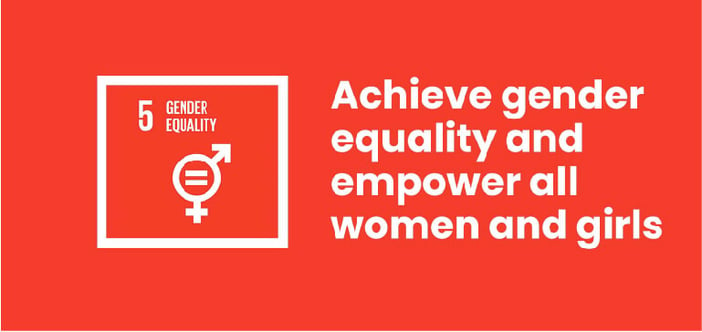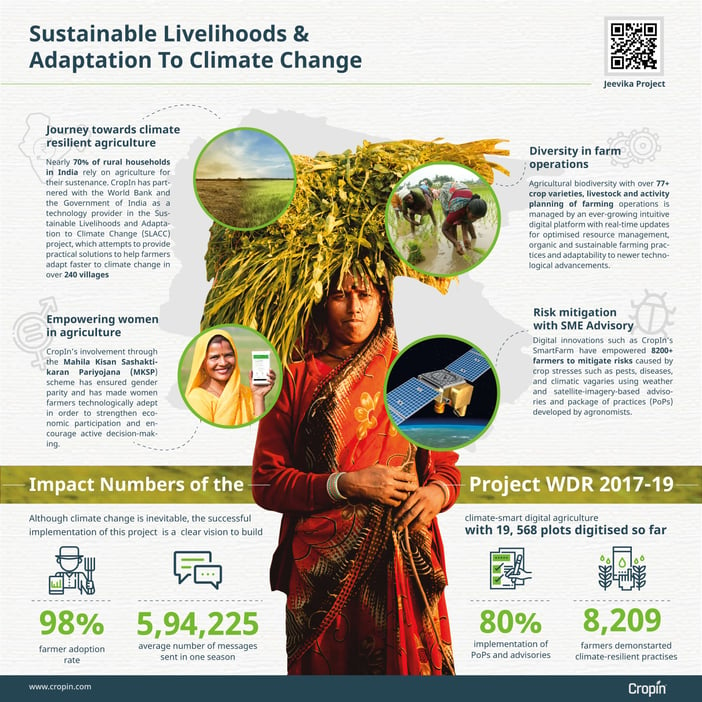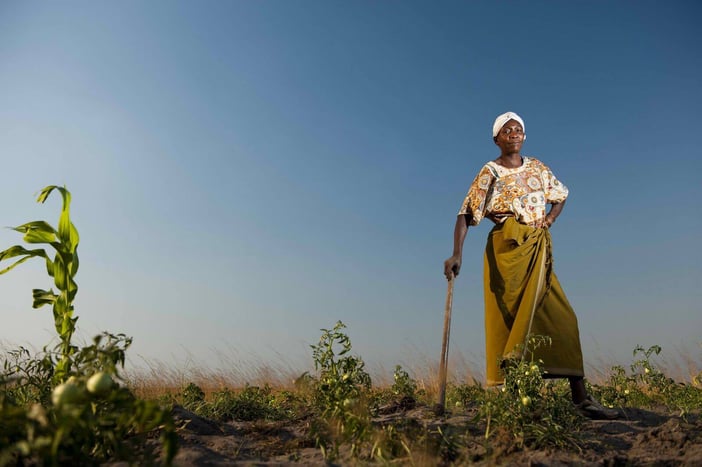Agriculture is the primary source of livelihood in several nations, employing more than 50% of the total workforce in India alone. For this sector to grow sustainably, there needs to be a balance in all aspects, one of the critical ones being gender equality. In recent times, with the impact of climate change becoming much more evident, the gender gap has been increasing as well, thereby making sustainable development goals (SDG) for agriculture indispensable.
Most farming carried out in rural India has come down to the point of mere sustenance and not profit. Women are losing out on this scenario even more as they have restricted access to resources and lack proper leadership. Until recently, the Women’s Empowerment in Agriculture Index (WEAI) was a non-issue, as it was not considered a hindrance to the overall development of market orientation and economy.
However, the future seems bright. But not free of stumbling blocks.
An Evident Imbalance
.jpg?width=702&name=SDG-Agriculture-Integrating-03%20(1).jpg)
Nearly 60% of women in South Asian and sub-Saharan African countries contribute to agricultural labor. Yet, there is a gap when it comes to access to resources like inputs, training, land and livestock ownership, or credits.
This gap gets further broadened by several factors, like crop growth (cash crop vs food crop), women’s age and education level, ownership of land and livestock, irrigation facilities, and electricity. Moreover, women have other household responsibilities to tend to, domestic chores, children, etc. These added burdens often narrow down the time bracket for them to get access to better development opportunities.
Equality cannot come into effect by merely giving access to leadership and ownership avenues to women. Other essentials like health, education, and economic and political empowerment are interconnected, as pointed out by Global Gender Gap Index (GGGI).
The concept of inequality is complex. Several factors, like social and cultural norms, community values, etc., significantly impact this inequality pool. Although a deeper insight into the concept can be quite complex, evidence of a gap in agriculture based on gender is as evident as it can be.
However, in the words of Dan Quayle: “The future will be better tomorrow.”
With Cropin, though, a “better future” is already underway.
Paving the Way for Women: An Obligatory Key for National and Economic Development
Gender inequality is a hindrance to sustainable development, and it sure is being addressed. In 2012, the United Nations held an international conference in Rio de Janeiro on Sustainable Development. Here, they established the 17 SDGs, the fifth of which is to “Achieve gender equality and empower all women and girls.”

To achieve this goal, entities like the Government of India, the World Bank, and pioneering establishments like Cropin continue to push the envelope and work round the clock. Additionally, several companies have also joined forces considering the development of womankind as their Corporate Social Responsibility (CSR).
At Cropin, we are partnering with programs like SLACC (Sustainable Livelihoods and Adaptation to Climate Change) in agricultural states like Madhya Pradesh and Bihar. Such programs connect rural women to modern amenities and opportunities, leading the way for improved awareness and economic independence to fuel overall national development and not just individual growth.
This multi-stakeholder project is a prime example of how women can mold themselves based on changes in climate, socio-economics, and technology to thrive and flourish like never before.
Development on the Technological End

Technology will play an essential role to help accelerate the realization of Sustainable Development Goals (SDG for agriculture). With women adapting to more straightforward and cost-effective farming and livestock tending methods, the yield increases manifold.
Cropin has been successfully doing this for the past 4 years through the SLACC initiative, providing women farmers with access to better opportunities and assistance wherever they need them.
With complete farm management solutions like SmartFarm®, it is easier to map plots, attain better agronomic knowledge, get weather forecasts, plan damage prevention, etc. This information is especially beneficial for areas prone to adversities like drought and flood.
Cropin realizes that understanding technology can be overwhelming for rural women but not impossible. Keeping these challenges in mind, Cropin offers regular interactive sessions to the advisory field agents, who educate these farmers on the grassroots level. We have designed the process in 5 stages that will help with rural upliftment and women empowerment in steps: planning, configuration, training, the start of season, harvest.

With its diversified features, several farmers have benefited from a boost in the economy. With this program, rural women have also been actively learning how to use a smartphone in its best capacity to maximize positive results. Moreover, the initiative has made them more aware of current affairs while keeping them well connected to the rest of the world. It seems like with all these combined efforts, achieving the SDGs in agriculture is likely possible soon.
Gender Equality Is an Essential Part of SDG for Agriculture
And we are actively addressing it.
The UN is trying to meet all 17 of its SDG goals by 2030. Achieving these SDGs will bring about a change for the better by identifying and strengthening individuals’ abilities to improve their lives and others around them.
With Cropin’s revolutionary efforts, farmers now have easy access to intuitive, intelligent, and self-evolving systems. These systems deliver future-ready farming solutions to the entire agricultural sector. We are also putting efforts into keeping their niche and livelihood intact as much as possible in this process. Collectively, we have been ardently helping to boost women’s participation in their development in agriculture and empower them with economic and decision-making capabilities for a rounded development.

Taking CSR a Step further
Every organization works with a service motive in one way or the other, as expressed by its CSR. Several companies like Wrigley’s (Shubh Mint program) and a leading telecommunications copmany in India took the initiative with Cropin, thousands of lives in Uttar Pradesh and Rajasthan, and more in other regions, have changed for the better.
BFSI and NBFC sectors, too, have shown their active participation with products like SmartRisk, offering economic support in the form of credit, insurance, etc., helping farmers leverage better yield and dynamically bring about a change in market orientation.
Giving back to society creates a ripple effect. With conjoined efforts, achieving SDG for agriculture is not a farfetched scenario. Backed by support from entities like the Government of India and the World Bank, our work has become much easier. The extensive involvement of several organizations is a prime indication of their determination to ensure gender equality and women empowerment.
For us, this is just the beginning. We will continue to change more and more lives every day. Discover how Cropin’s digital solutions can drive gender equality and women empowerment initiatives in your organization.










